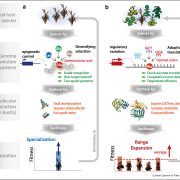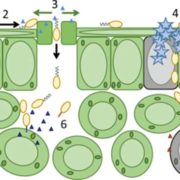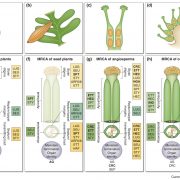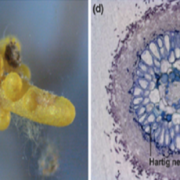Maize adaptation to higher latitudes has been facilitated by transposon activities.
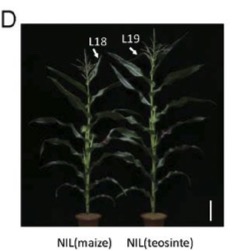 Proc. Natl. Acad. Sci. USA. Flowering is a major determinant of crop adaptation to new environments. Starting from its tropical origins and requirement for short-day conditions to flower, natural selection and breeding have allowed maize to adapt to long-day environments and thus be grown over a wider range of latitudes, from Canada to Chile. Nevertheless, molecular determinants of this adaptation are poorly understood. In this study, the authors describe a flowering-time quantitative trait locus that overlaps with a DNA transposon. This mobile element acts in cis to repress the transcription of a downstream transcription factor called ZmCCT9. Down-regulation of ZmCCT9 induces the activation of the flowering-promoting gene ZCN8, allowing flowering in long-day conditions. The authors further reveal that insertion of this transposon occurred post-domestication since it is not present at this location in teosinte, the wild ancestor of maize. Remarkably, other major flowering-time quantitative trait loci in maize are also associated with transposons, suggesting that mobile elements have been instrumental in maize adaptation to higher latitudes. Altogether, this study provides new insights in the contribution of transposons to developmental plasticity and local adaptation in crop plants. (Summary by Matthias Benoit) Proc. Natl. Acad. Sci. USA. 10.1073/pnas.1718058115
Proc. Natl. Acad. Sci. USA. Flowering is a major determinant of crop adaptation to new environments. Starting from its tropical origins and requirement for short-day conditions to flower, natural selection and breeding have allowed maize to adapt to long-day environments and thus be grown over a wider range of latitudes, from Canada to Chile. Nevertheless, molecular determinants of this adaptation are poorly understood. In this study, the authors describe a flowering-time quantitative trait locus that overlaps with a DNA transposon. This mobile element acts in cis to repress the transcription of a downstream transcription factor called ZmCCT9. Down-regulation of ZmCCT9 induces the activation of the flowering-promoting gene ZCN8, allowing flowering in long-day conditions. The authors further reveal that insertion of this transposon occurred post-domestication since it is not present at this location in teosinte, the wild ancestor of maize. Remarkably, other major flowering-time quantitative trait loci in maize are also associated with transposons, suggesting that mobile elements have been instrumental in maize adaptation to higher latitudes. Altogether, this study provides new insights in the contribution of transposons to developmental plasticity and local adaptation in crop plants. (Summary by Matthias Benoit) Proc. Natl. Acad. Sci. USA. 10.1073/pnas.1718058115




